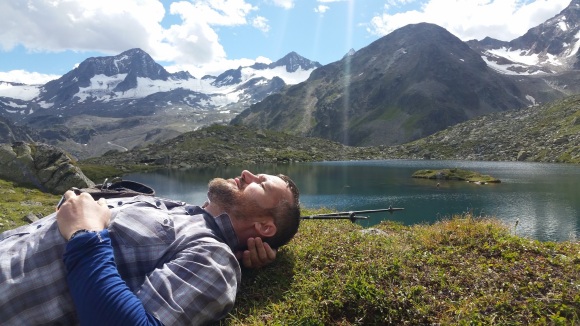
I study societal responses to climate change, and human-environmental interactions over hundreds to thousands of years using computer models and proxies of environmental change. I am a postdoctoral researcher at the National Center for Ecosystem Analysis and Synthesis (NCEAS) and the University of California, Santa Barbara, where I work on the Iterative Eden Project (IEP). The objective of IEP is to come up with a clear, scientifically informed, practical solution to the question, “We want a future world of 10 billion people that is healthy, happy, blue and green — how do we get there?”
I was previously a research scholar at the International Institute for Applied Systems Analysis (IIASA), near Vienna, Austria, where I worked on the FABLE Pathways Project. FABLE partners with international knowledge institutions to distribute state-of-the-art spatially explicit land-use modeling tools to help its partners make good on their home countries’ commitments to lowering greenhouse gas emissions, protecting natural lands and biodiversity, and improving the sustainability of global food and land-use systems.
For my Ph.D. at UCLA, I downscaled climate models to produce time-series of climate data with high spatial resolution; analyzed paleo-archives for macrofossils, pollen, and carbonates to measure changes in temperature and precipitation; and collaborated with archaeologists and earth scientists to make broad-spectrum reconstructions of ancient landscapes and conditions for human occupation. My dissertation fieldwork was carried out in mountain lake sites in the American state of Utah, and as a member of the Neolithic survey team on the Fayum Project URU (i.e., with principal investigators based at UCLA, Rijksuniversiteit Groningen in the Netherlands, and the University of Auckland, New Zealand) in Egypt.
In Utah, we were mainly concerned with changes in the pattern of site occupations of ancestral Puebloan communities commonly known as the Fremont during the transition from the Medieval Climate Anomaly (MCA) to the Little Ice Age (LIA). The Fremont were part of a broader Native American cultural complex which farmed corn (Zea mays) in the Southwest, including those who built the famous ruins in Chaco Canyon, Canyon de Chelly, and at Mesa Verde. Fremont occupation of Utah peaked in the middle 11th century CE, and thereafter began a long period of decline, beginning with upland basins on the Colorado Plateau. This appears to have been part of at general translocation of peoples southwards, resulting in the complete abandonment of the northern Southwest (the eastern Great Basin, northern Colorado Plateau and San Juan River drainage) prior to the arrival of the Spanish. In Fayum, our aim was to connect poorly understood regional changes associated with the end of the Holocene climatic optimum (or Neolithic sub-pluvial, and commonly as the Green Sahara period) and the abandonment of the Fayum circa 4300 BCE.
I began my academic career as a physicist, doing my M.Sc. thesis research in neutrino astrophysics at the Sudbury Neutrino Detector (SNO) in Canada. Now SNOLAB, one of the premier underground laboratory sites in the world, the former neutrino detector chamber is being refitted to house SNO+. Among its goals are to look for neutrinos generated from radioactive decays within the earth (geoneutrinos) and neutrinoless double beta-decay.